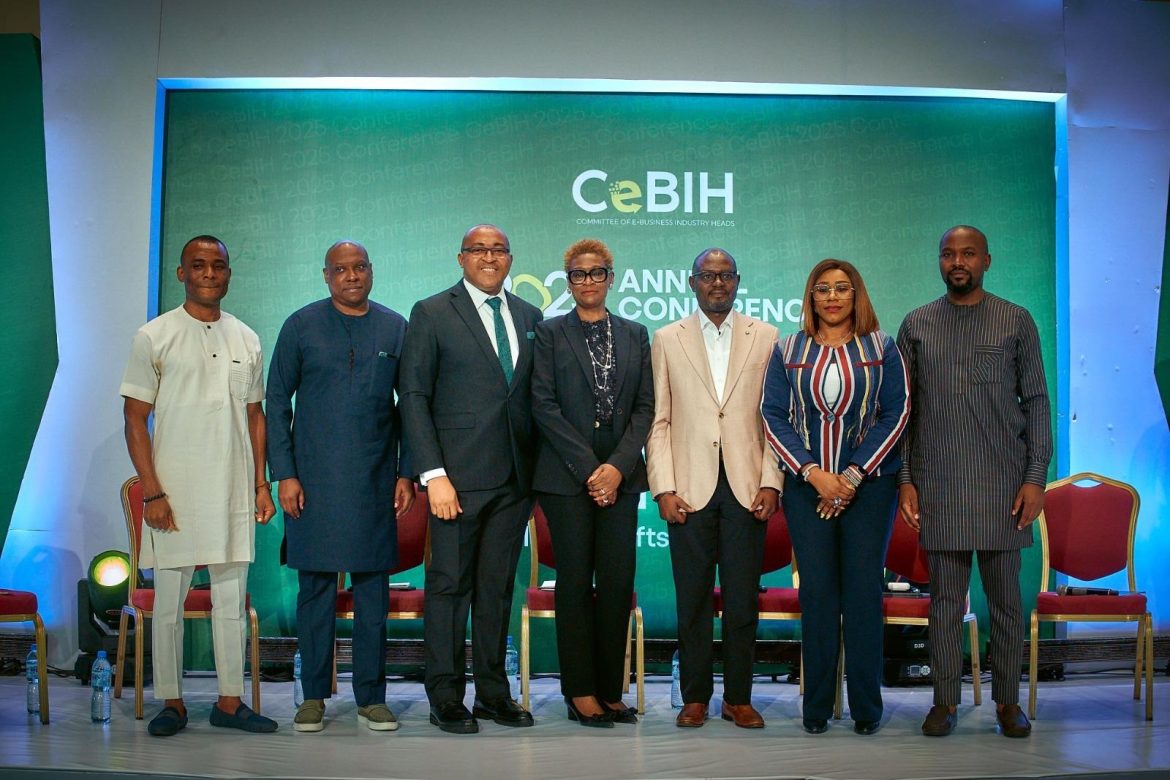During a “Shark Tank”-style event held online in May, eight finalists of the fourth annual Penn Wharton Entrepreneurship Startup Challenge battled it out for $135,000 in cash and in-kind awards.
In order to qualify for the yearly competition, startups must be new businesses launched during a team member’s enrollment at the University of Pennsylvania. This year, the eight finalists were culled from a list of 30 semifinalists. With businesses ranging from curated flower rentals to telemedicine for pets, the finalist teams were each given 30 minutes for a pitch and Q&A with the panel of alumni judges.
Descriptions of the eight finalist startups follow. Can you guess which team won the grand prize? Read on….
Aureum
At the outset of the coronavirus pandemic, a significant defect in China’s health care system was exposed, according to Renee Yu, Aureum’s head of product. “There is a lack of primary care…. People flood into public hospitals when they don’t feel well.” Fewer than 5% of Chinese citizens have a primary care doctor, the team said.
Yu and CEO Derek Gao said they aim to remedy the situation with Aureum, which they characterized as “a digital family doctor for Chinese and their families.” To assess the market, they surveyed more than 1,000 Chinese white-collar professionals and found that 63% responded positively to the idea of having a primary care physician.
Offered under a family subscription model for the U.S. equivalent of $40/month, the telemedicine app matches patients with a health care consultant who conducts remote diagnoses and helps manage long-term wellness. Other features include user-accessible electronic medical records, medical notifications to the patient’s smartphone, and automated assessments that track potential risks to the user’s health.
Aureum has three doctors under contract and ten specialists. Gao said they also have two senior doctors as advisors, who connect them with valuable resources and additional doctors on the ground.
Aureum began beta testing in October 2019 and now serves more than 300 paid users, according to Gao. The team reported a 70% conversion rate of customers moving from heavily discounted subscriptions to full-price subscriptions. Their future plans for the business are to expand into other revenue sources such as specialist referral and prescription home delivery.
“The upside is huge,” said Gao. He asserted that based on figures from their pilot city Shenzhen, home to 16 million white collar professionals, “even with a 1% market share we can generate more than $30 million in revenue a year.”
Frutero
Americans love ice cream, according to Frutero co-founder Vedant Saboo. In fact, the average American consumes a whopping 23 pounds of ice cream every year, he said, making the U.S. ice cream industry a $10 billion market.
The kind of ice cream people prefer depends largely on their cultural heritage, according to studies, Saboo said. For example, Americans with European heritage tend to like traditional American flavors like chocolate and cookie dough, while people from tropical regions such as Latin America tend to like fruit flavors. Yet, although nearly 20% of the U.S. is of Latin American heritage, there is no premium ice cream brand to serve their tastes.
Enter Frutero, which Saboo said is the first premium, all-natural, Latin-inspired ice cream brand, featuring varieties such as mango, guava, guanabana, passionfruit, and coconut. Founded in June 2019, the company now has its products in more than 400 stores in Pennsylvania, New Jersey, and New York, and its customers include Whole Foods, Giant Food Stores, FoodTown, Aramark, and Go Puff. Its current monthly revenue run rate is $30,000 and it has sold more than 100,000 units of its product.
Saboo explained that each container of Frutero costs one dollar to produce, and is sold to distributors for $1.50, resulting in a 32% gross margin. Over the next few months, though, he said, “we plan for large economies of scale to kick in, which should increase our gross margin to 50%.”
Saboo and co-founder Mike Weber believe that Frutero appeals to “variety seekers who want authentic flavors from other cultures,” as well as natural food advocates who care about quality ingredients. And for those with a Latin American upbringing, they said, Frutero will “taste like home.”
MAR Designs
400,000 U.S. families have a child with cerebral palsy (CP), and many experience bedtime battles with their son or daughter about wearing their prescribed wrist orthoses. But there may be help in the offing, according to the MAR Designs team.
MAR Designs co-founder, Penn Robotics PhD student Michael Sobrepera, explained that often children with CP are prescribed wrist orthoses to stretch the muscles and improve hand function. Yet many end up not wearing them because they can be uncomfortable or even painful. (Sobrepera reported one frustrated father’s comment: “The current state of the art is equivalent to medieval torture chambers.”)
The team asserted that they have designed a better solution than the static or spring-loaded orthotics on the market. MAR’s wrist device is “a dynamic reactive orthosis that works with the patient,” in Sobrepera’s words. The product operates via a battery-driven electric motor and sensor. Children don’t have to stretch out their hand to put on the device, and after they’ve fallen asleep at night, the sensor detects that they’re asleep and gently begins the stretching process. The amount of stretching can be pre-set to different points.
Another advantage of MAR’s device, Sobrepera said, is that it collects data on how much the orthosis is actually being used, information that would benefit both parents and physicians. The team stated that their product would lead to better compliance and improved treatment outcomes, not to mention an easier time for families.
The MAR Designs team is looking to achieve clinical validation and FDA clearance later this year, and to start producing and selling the device in 2021. They also have their eye on the larger market of 2.2 million Americans living with movement-related disorders such as stroke and MS. The team projected $1 million in sales by late 2022.
My Virtual Veterinarian
When Felicity Johnson’s cat Tiffany was diagnosed with cancer, Johnson had to go through countless time-consuming veterinary visits. “I found it incredibly difficult to juggle bringing her to the appointments—which were scheduled for the middle of the day—and managing my job,” she said. That experience inspired her to create My Virtual Veterinarian.
Roughly $28.5 billion was spent on veterinary care in 2018, and pet owners are spending more at a faster pace every year, said Johnson. But when surveyed, more than half of pet owners say convenience is a top priority when choosing a vet. Telemedicine has not been widely used—limited by FDA regulations—but in late March because of the COVID-19 pandemic, the FDA suspended those regulations, enabling a virtual approach.
The My Virtual Veterinarian iOS app connects pet owners with vets for video and chat appointments. Users can either access their primary vet through the app or search a list of vets available sooner. Johnson gave the example of Aggie, an Australian Shephard dog who was showing signs of a painful UTI. Aggie’s regular vet wasn’t available for three days, but the dog’s owner used My Virtual Veterinarian and within one hour received a prescription at her local pharmacy.
The startup’s revenue model is based on taking 30% of each appointment fee and passing the rest to the veterinarians. Johnson said the business’s margin per appointment is 94%. She noted that there are advantages for veterinarians as well: Vets at traditional practices typically earn 25% commission, but with this model they receive 70%. In addition, they can arrange appointments that fit their schedule, and access new customers.
My Virtual Veterinarian’s marketing efforts include a pop-up clinic to get to know pet owners on a personal level, a referral network, and “custom dog poop bags” placed at free stations around Philadelphia.
Percepta
Shoplifting cost retailers almost $20 billion every year, said Percepta co-founder Philippe Sawaya. To combat it, retailers hire loss prevention personnel, but these individuals are typically required to look at approximately 50 camera feeds for some eight hours a day, ultimately missing 70% of all shoplifting incidents, he said.
Worse, stores incur a 40% false positive rate of apprehensions, and the high rate has been attributed to racial bias. Such false accusations—in addition to the obvious harm to human beings—can damage companies’ reputations, as reflected in high-profile cases in recent years.
Sawaya and co-founder Jonathan Mak asserted that their product Percepta offered a better solution. “We build ethical AI to combat shoplifting in an unbiased manner,” said Sawaya. The two explained that their proprietary AI anonymizes the images from security camera feeds to conceal customers’ race, gender, age, and personally identifiable characteristics. It uses a technology that instead analyzes pose, gaze, and behavior patterns to determine shoplifting risk. If the risk is sufficiently high, the system automatically notifies the store’s floor personnel so they can approach the suspect. The team asserted that their AI, after undergoing “thousands of hours of training,” has achieved 95% detection accuracy.
Sawaya, Mak and their colleagues have their eye on the big-box chain retailers, who must monitor hundreds of large stores. Pricing their offering at $80/month for each camera they monitor, they estimate that with 240 cameras on average in a typical big box store, they could earn $20,000 a store each month.
The team said it has already garnered interest from such major firms as Comcast, Ross, and Abercrombie & Fitch. “We’re incredibly excited to bring Percepta to market and make an impact in the world of retail,” Sawaya said.
Rent the Rose
The inspiration for creating Rent the Rose, explained co-founder Monica Choudhury, was “watching friend after friend spend tens of thousands of dollars on [wedding] flowers … only to have to throw them out the very next day.” Instead, Rent the Rose offers “incredibly high-quality faux flowers” for event rental at less than half the cost of the real thing, said the team.
Choudhury and co-founder Andie Kaplan described why they believe customers are ready for faux flowers. The expense is one factor. But even for those willing and able to pay top dollar, there is often uncertainty around whether the flowers you want will be available in that season, or at your event location, or whether they’ll arrive in perfect condition. Ordering is difficult, too, as the flower industry is decentralized and opaque to consumers.
The Rent the Rose team said that the flower event industry in the U.S., which includes weddings and corporate events, is a $3 billion untapped opportunity for its product. They added that with the rise of the sharing economy, consumers will be more open to the idea of flower arrangement rental, citing the statistic that 57% of millennials are willing to rent well-made, trendy items.
Sustainability concerns are another selling point for their product, they said. The process for growing flowers is unsustainable, requiring enormous amounts of natural resources and human labor and incurring heavy CO2 consumption.
With a materials cost per rental of about 1% the cost of fresh flowers, and arrangements that last through 30 re-uses, Rent the Rose said they can maintain a high operating margin of more than 75%. Currently, in the face of the COVID-19 pandemic when onsite events have been shut down, the team is exploring home sales and gifting. “We’re confident that our budget-friendly e-commerce offering is appealing now more than ever,” Kaplan said.
Showcase
Dana Kim described how working as a market researcher for major clients including Uber, Facebook, and Coca-Cola made her aware of how inefficient the market research process can be. It was expensive: A two-hour focus group with six people might cost the client $15,000. It was slow: The average time for getting usable data was six to eight weeks. Moreover, the group of people signing up for surveys, panels, and focus groups tended to be limited.
In 2019, Kim and co-founder Ethan Kellough invented Showcase to offer a different approach. Showcase consists of a network of vending machines that dispense free products in exchange for filling out surveys about the items. The big advantage for brands, said Kim, is they get “super-targeted, in-moment consumer insights, with a consumer [they’ve] never reached before.”
The way it works is that the vending machines are linked with a smartphone app. People visiting the machine are sent to vendit.app where they choose among items such as granola bars and snack waffles. They make a selection, receive a QR code, hold that up to the machine, and the item is dispensed. The incentive for providing feedback: If your survey isn’t received within 24 hours, you’re locked out of the system.
Kim said their initial machines on the University of Pennsylvania campus received good traction. In the six weeks that Showcase was up and running, before the pandemic, the team received 1,100 completed surveys (which amounted to more than 75%) and onboarded some 750 users and 11 brands. Half of the users were visiting the machines more than once, and the incentive structure functioned well.
Kim said their participating brand clients were excited about Showcase. “They used the data … to [go] to retailers like Starbucks and say, ‘Hey, you should carry this [product], here’s how much people love it.’”
The Lobby
The $35 billion U.S. film industry includes a substantial retail presence: 5,500 theaters offering 40,000 screens. Similarly, the $20 billion music industry has 7,000 live venues. But the American gaming industry, although larger than either of these at $36 billion, has little to no retail element.
That is the “white space” that Daniel Duggal and Ian Klein, co-founders of The Lobby, are aiming to fill, they said. They described The Lobby as a private member’s club for adult-age video game enthusiasts. The locations would feature stylish décor, a bar and lounge area with food service, living-room-style alcoves with consoles, PC gaming setups, and reservable private rooms for groups.
The co-founders are both passionate video game enthusiasts, and Klein is a former data scientist for Twitch, Amazon’s videogame live-streaming platform. The team noted that they are supported by advisors including Dan Schwab, a co-owner of Dignitas e-sports (e-sports is competitive, organized video gaming) and of several traditional sports franchises; and Eric “Muddawg” Sanders, a general manager of Optic Gaming and a former head of e-sports operations at 100 Thieves.
Duggal and Klein propose charging $175 a month for unlimited access to the space and equipment, similar to a gym membership, they said. The team foresees opening up a number of locations, and projects building a profitable business based on retail unit economics and comparisons to similar types of businesses.
Whether gamers will “get off the couch for this,” is a question the team gets a lot, said Klein. In response, they often give the example of e-sports events, at which the crowd is typically loud, excited, and enthusiastic. Klein expressed what he believes the appeal is: “When we’re surrounded by people who share this love and passion for gaming, we’re not worried about anyone judging us for [our] weird or quirky interest.”
And the Winner Is…
My Virtual Veterinarian won the $30,000 Perlman Grand Prize, consisting of $30,000 plus $15,000 in legal, accounting, and strategy services. Founder Felicity Johnson said she planned to use the prize money to improve the startup’s website so that the customer experience mirrors that of the iOS app, and also toward marketing efforts.
When asked about the biggest challenge to her business, she responded that it was the uncertainty about how FDA regulations around telemedicine might change again once the COVID-19 threat is reduced. However, she is confident they will not be as restrictive as in the past, and also noted that My Virtual Veterinarian has “contingency plans in place to adjust the platform based on regulatory changes.”
Percepta was the runner-up, receiving $15,000 plus $15,000 in legal, accounting, and strategy services. But Percepta’s wins didn’t stop there: It took away the $10,000 Frederick H. Gloeckner Award for Best Undergraduate Team, the $10,000 Robert S. Blank New Venture Collaboration Award, and a $2,500 Crowd Favorite Award.
CEO Philippe Sawaya said he considered Percepta’s wins to be “a function of the timeliness and innovativeness of our ethical AI.” He added that Percepta’s anonymizing technology eventually could be applied beyond retail, for instance, for spotting weapons on college campuses or monitoring the use of face masks in hospitals. “We hope that the judges saw our ethical AI as both a societal benefit and a source of vast business potential in untapped markets.”
Two additional finalist teams won prizes. Garnering an Innovation Award was the MAR Designs team, which received $10,000 plus $15,000 in legal, accounting, and strategy services. And Frutero earned the Launch Prize, consisting of $10,000 plus $15,000 in services.









